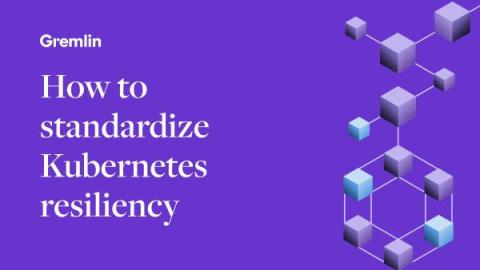How to standardize resiliency on Kubernetes
There’s more pressure than ever to deliver high-availability Kubernetes systems, but there’s a combination of organizational and technological hurdles that make this easier said than done. Technologically, Kubernetes is complex and ephemeral, with deployments that span infrastructure, cluster, node, and pod layers. And like with any complex and ephemeral system, the large amount of constantly-changing parts opens the possibility for sudden, unexpected failures.











